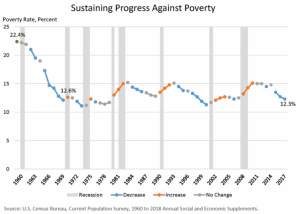Since early 2022, the big buzz in the tech industry, and among laymen in the general public, has been “artificial intelligence.” While the concept isn’t new—AI has been the term used to describe how computers play games since at least the 1980s—it’s once again captured the public’s imagination.Before getting into the meat of the article, a brief primer is necessary. When talking about AI, it’s important to understand what is meant. AI can be broken down into seven broad categories. Most of the seven are, at best, hypothetical and do not exist. The type of AI everyone is interested in falls under the category of Limited Memory AI. These are where large language models (LLMs) reside. Since this isn’t a paper on the details, think of LLMs as complex statistical
Read More »Articles by Justin Murray
Why It’s so Hard to Escape America’s “Anti-Poverty” Programs
February 20, 2020One of the most common debates that has occurred in the United States for the past six decades is the discussion of the poverty rate. As the narrative goes, the US has an unusually high poverty rate compared to equivalent nations in the OECD (Organisation for Economic Co-operation and Development). Although it’s true that the measure of poverty is flawed, especially when compared cross-nationally, this piece addresses the reasons why the poverty rate in the US in particular has not improved.
If we look at the graph below, we see that official poverty rates fell 44 percent between 1960 and 1969 then spent the next fifty years fluctuating between an 11 and 15 percent poverty rate.
It’s this lack of improvement over a five-decade period that is interesting,

